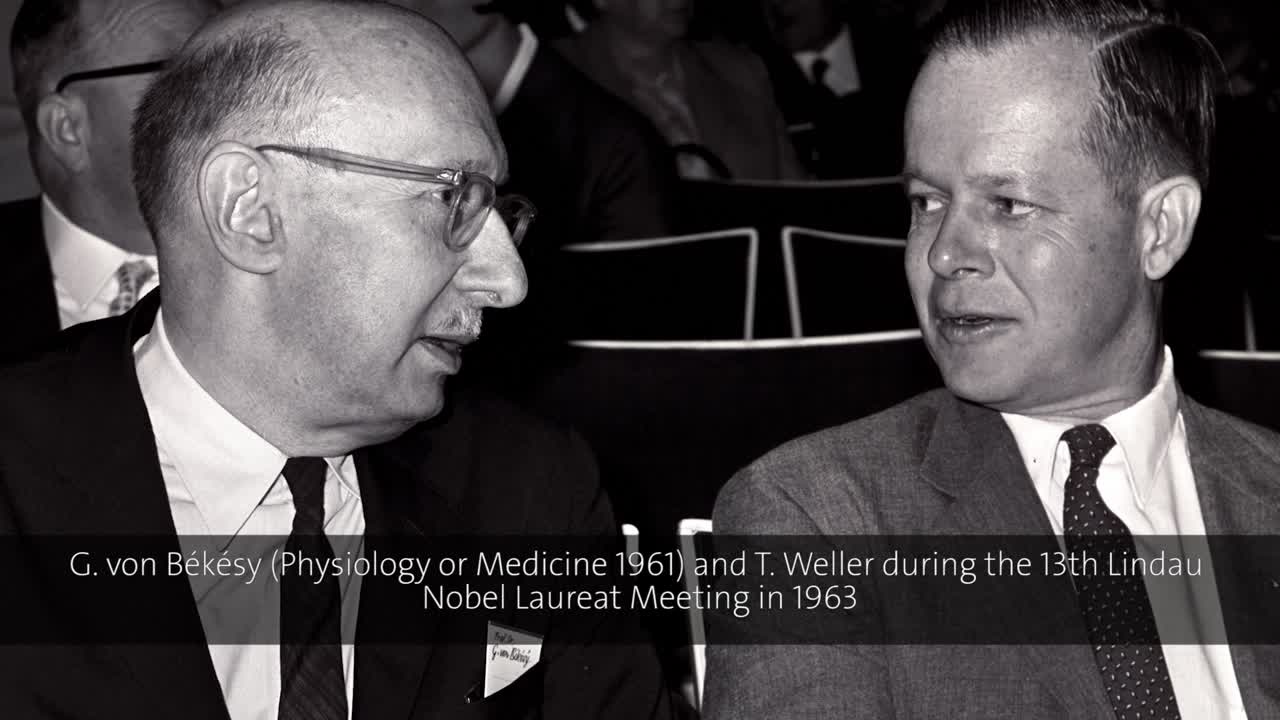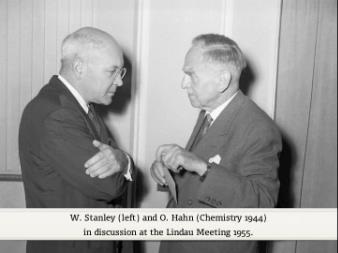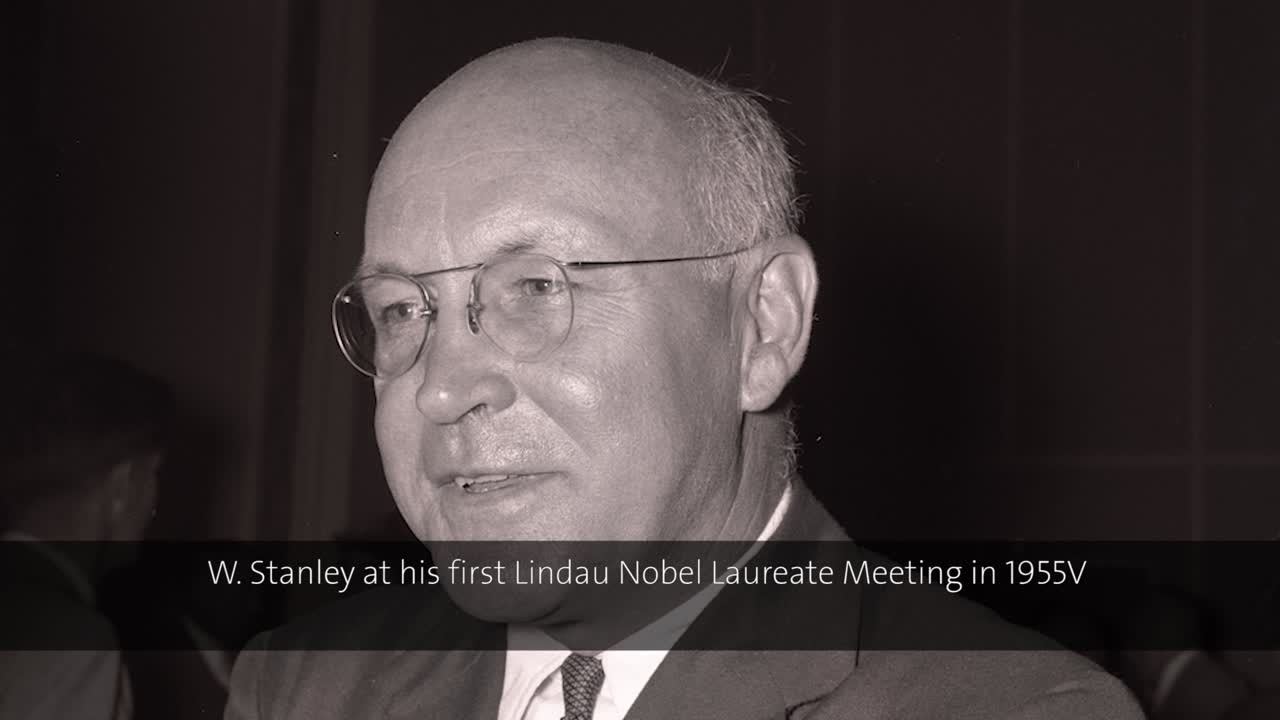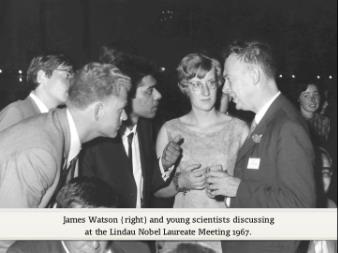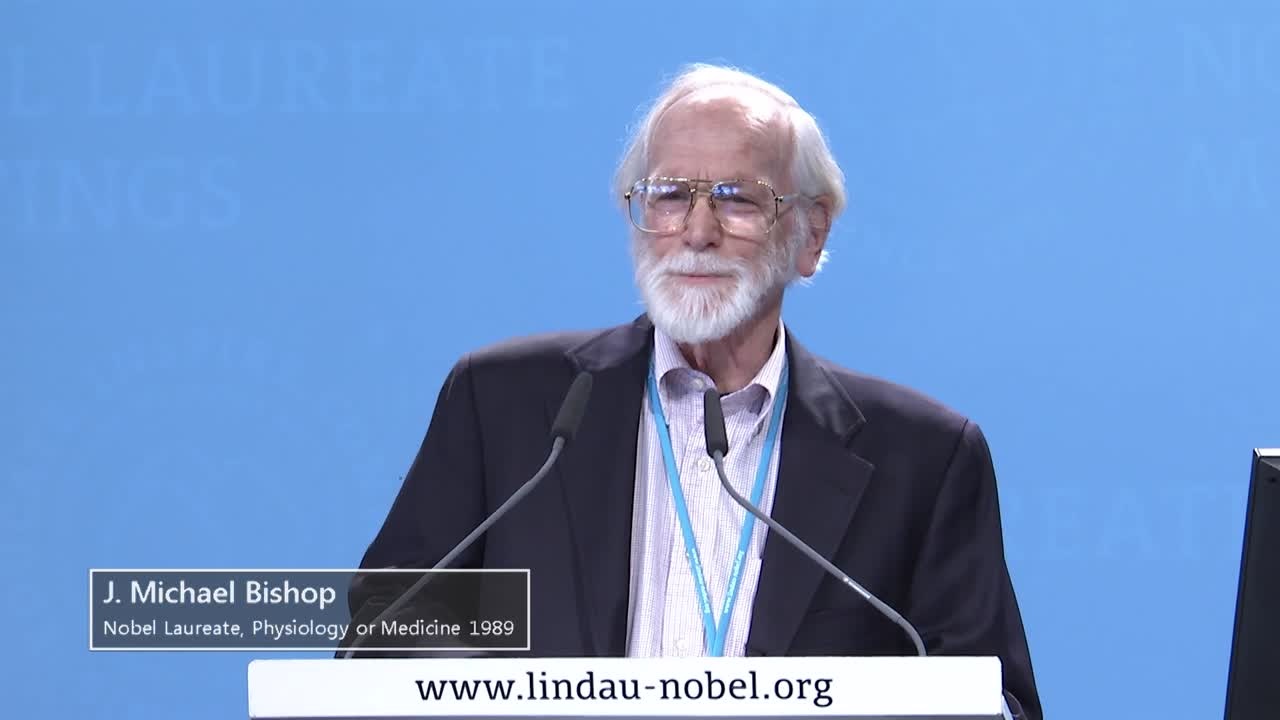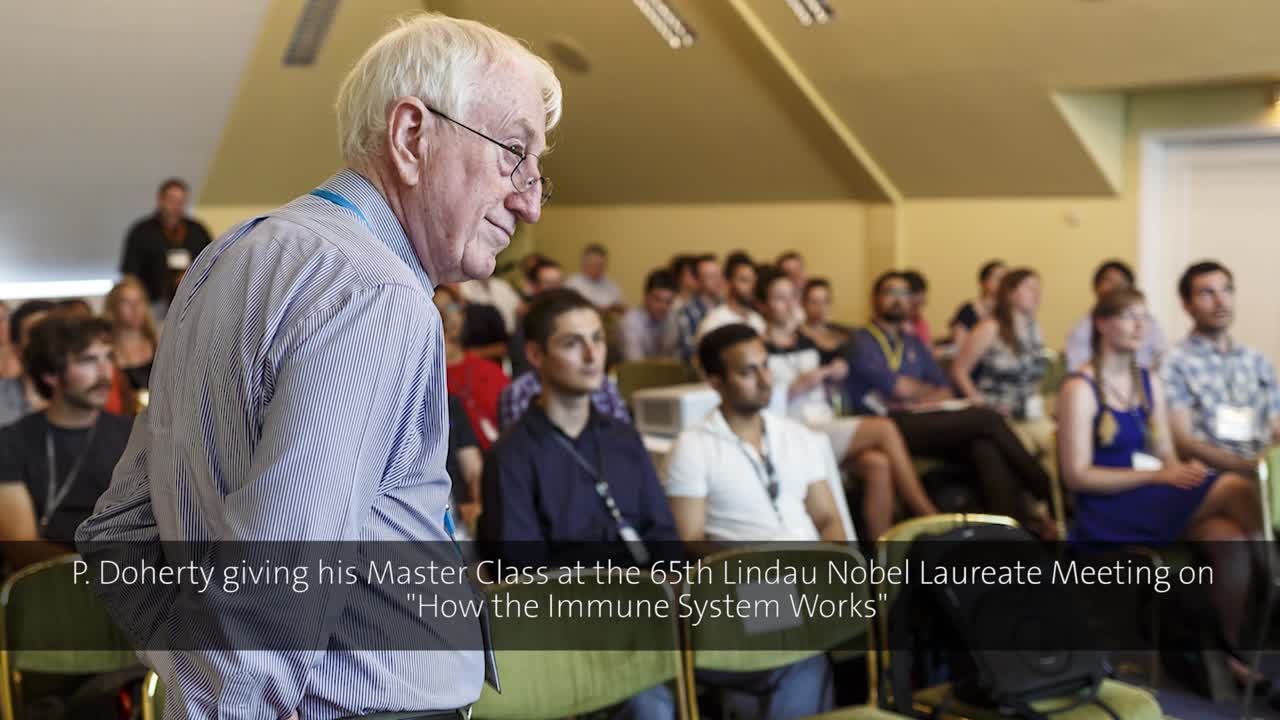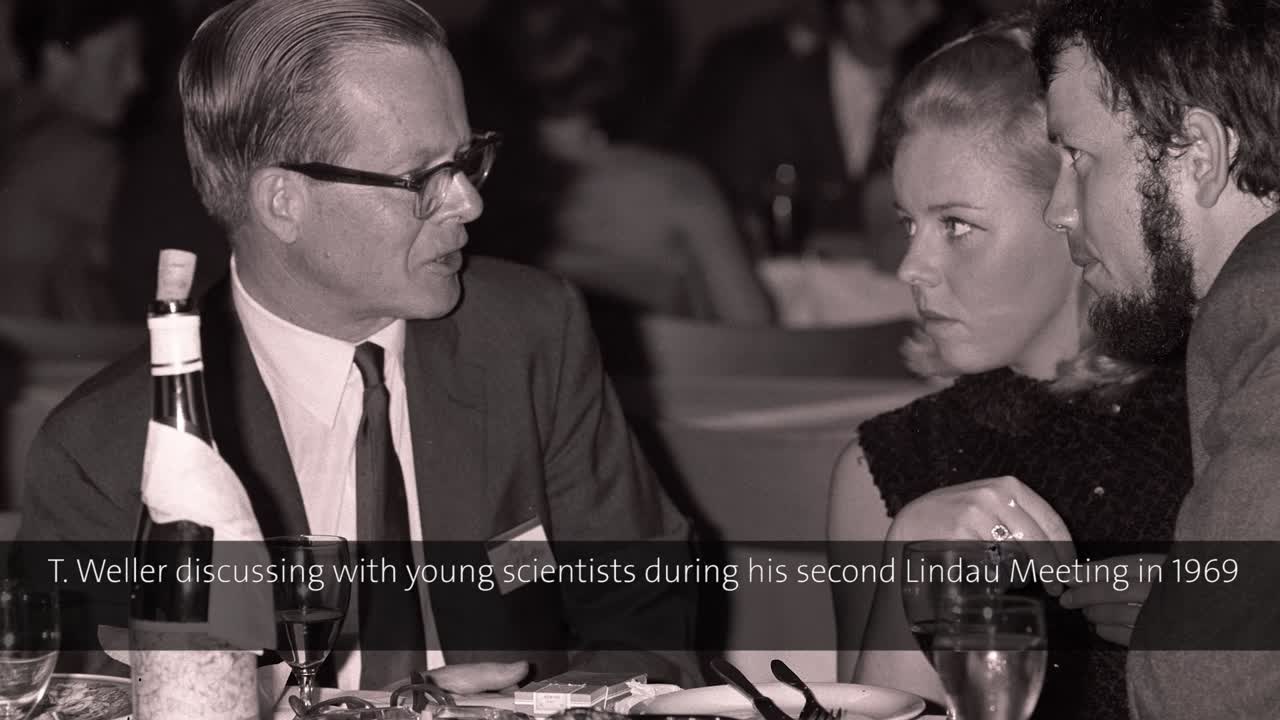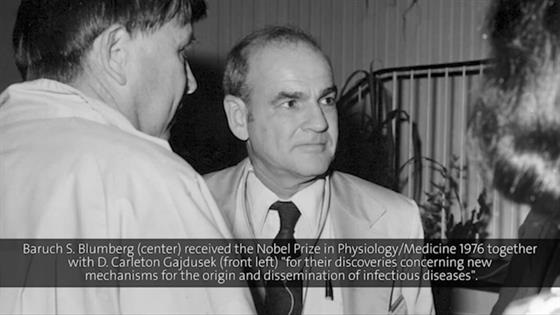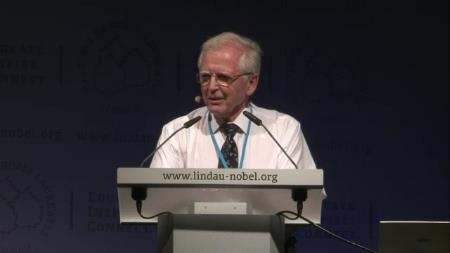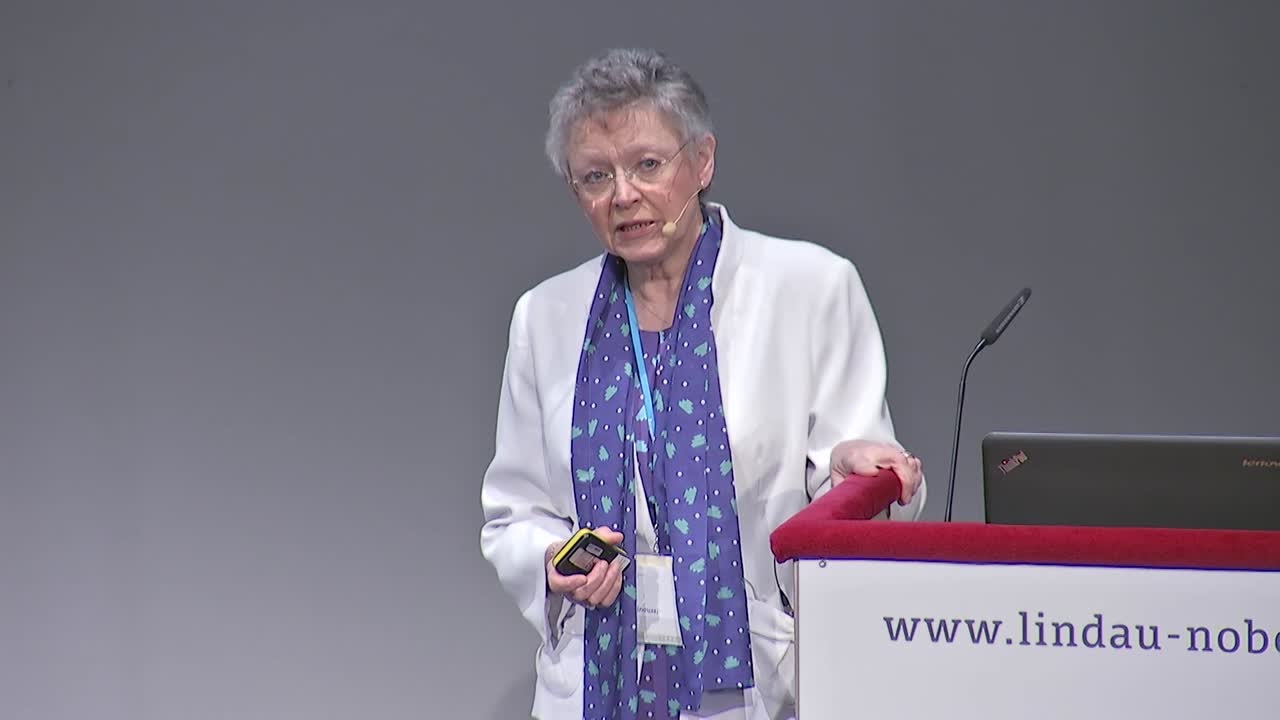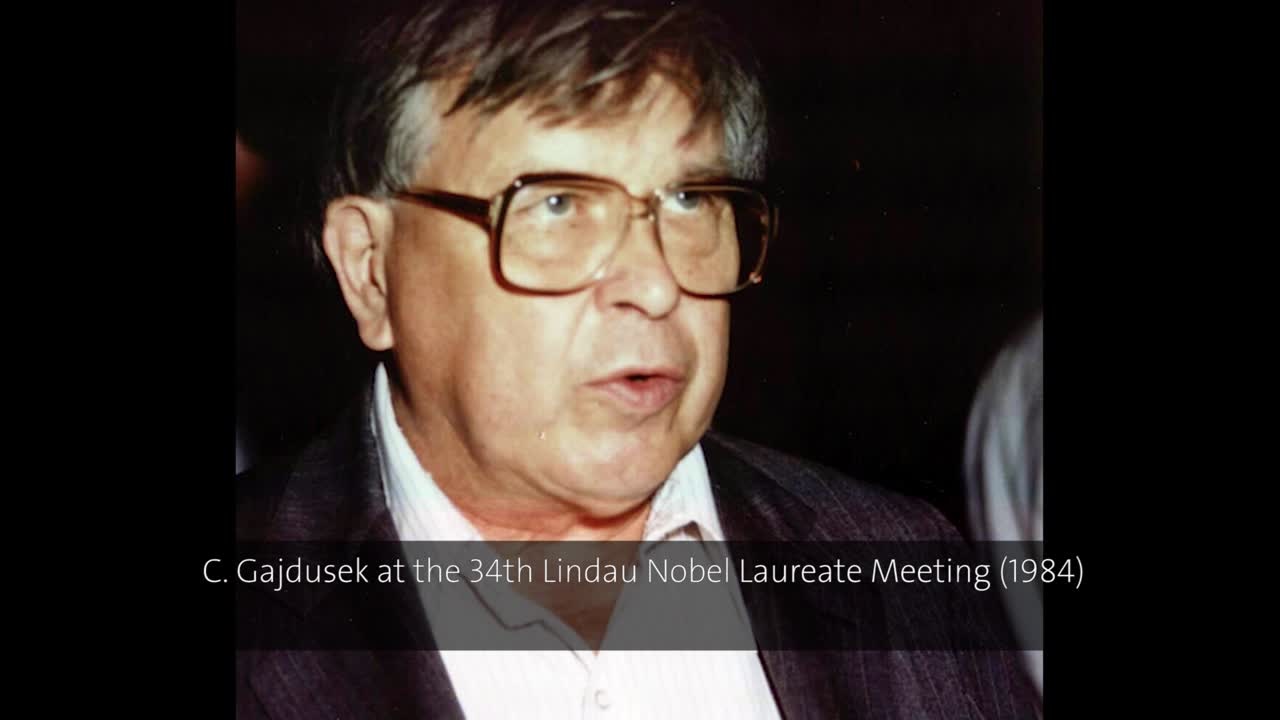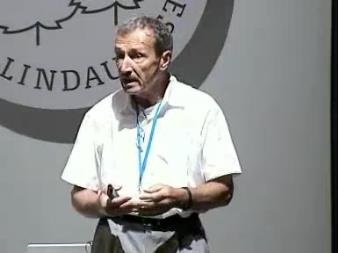Viruses

by Hanna Kurlanda-Witek
It’s not a typical setting for a vaccination. A woman dressed in a white dress is holding her squirming toddler, who is about to be pierced in the arm by the white-haired doctor, squinting through his spectacles. Other members of the family are crowded around, peering at the scene. The family dog is quietly sitting nearby. A baby, already undressed and oblivious to the fact that he is to go next, is petting the household cat. The nannies are comforting two older children. There are no white aprons or latex gloves, and the whole procedure is taking place in a sitting room with billowing green drapes. The oil painting depicting this scene was painted by the French painter Louis-Léopold Boilly in 1807. The very first vaccination, against smallpox, was carried out several years earlier by the British physician Edward Jenner, most likely in a similar fashion as illustrated by Boilly[1]. In the next decades, vaccination against smallpox, a virus that had a fatality rate of between 20% and 60% of those infected (80% in children), was moderately successful, but it was a global immunisation campaign initiated by the World Health Organization (WHO) in 1967 that led to the complete eradication of smallpox ten years later[2]. In 1980, the World Health Assembly declared that “the world and all its people have won freedom of smallpox”, and vaccination against the disease became medical history. This is succinctly described by the Lindau mediatheque’s Mini Lecture on herd immunity.
In 1978, Nobel Laureate Thomas Weller gave an interesting account of how smallpox was defeated, with the “utilisation of practically all elements of our industrial revolution”:
(00:21:13 - 00:28:45)
To listen to the full lecture click here.
Microbes Which Pass Through Filters
Despite the fact that viral infections are very common, and symptoms of infections have been described for millennia, viruses were not discovered until the end of the 19th century, and even then, they were simply described as infectious agents, or pathogens, smaller than microbes. The first studies were carried out on the tobacco mosaic virus, a plant virus. In 1890, the Russian microbiologist Dmitri Ivanovsky was asked to study mosaic disease, which was damaging tobacco crops in Crimea. He found that the pathogen was able to pass through porcelain filters, thus it was much smaller than commonly known bacteria. It was Martinus Beijerinck, who, in 1898 confirmed that the agent causing tobacco mosaic disease is not bacterial in origin, but caused by a contagium vivum fluidum, a tiny molecule that only multiplies in living cells. In the same year, the German scientists Friedrich Loeffler and Paul Frosch discovered that the causative agent of foot-and-mouth disease was filterable, hence this became the first known animal virus. Yellow fever virus was the first discovered human virus, reported by Walter Reed and colleagues in Cuba and the United States in 1901[3].
For the next 30 years, illnesses were labelled as caused by viruses, yet no one knew exactly what a virus was. In terms of size, viruses were believed to occupy the unknown area between large proteins and bacteria. This gap between living and non-living things was closed by Wendell Stanley, a virologist who crystallised tobacco mosaic virus (TMV), making it possible to visualise the virus under an electron microscope. A new continuum was formed between the chemists’ molecules and the microbiologists’ bacteria. Stanley received the Nobel Prize in Chemistry in 1946, and gave this definition of viruses at the 5th Lindau Nobel Laureate Meeting:
(00:02:52 - 00:05:39)
To listen to the full lecture click here.
Nothing like this had been known before; an inert crystal that sprang to life in a living cell, becoming highly infectious. Were it not for the non-living characteristics of viruses, they would probably have been identified and analysed much later than the 1930s. Here, Wendell Stanley describes the crystallisation features of viruses:
(00:09:27 - 00:14:18)
To listen to the full lecture click here.
Viruses as Models in the Field of Molecular Biology
A virus could now be seen, but what qualified viruses as living organisms – how they replicated, what was their genetic makeup – was still unknown. James Watson studied bacterial viruses for his PhD and postdoctoral work, which eventually led him to study the chemistry of nucleic acids at the Cavendish Laboratory at the University of Cambridge in 1951. There, Watson and his colleague Francis Crick discovered the structure of DNA, which, during his first lecture at Lindau in 1967, Watson described as “a pleasant surprise”. Watson continued to investigate bacterial viruses, also known as bacteriophages, because he believed he could learn more about the structure and replication of viruses from its very simplest representative. If one were to study animal viruses, the complexity would increase one hundred-fold. Watson dubbed viruses as “small chromosomes inside a protein shell” and went on to describe the structure of the bacteriophage R17:
(00:35:42 - 00:38:04)
To listen to the full lecture click here.
This lack of complexity in structure allows viruses to maintain life cycles of incredible speed and efficiency. Each virus species attacks the host cells somewhat differently, yet the overall stages of the viral life cycle are similar. The virions first attach to specific receptors in the cell membrane, then penetrate the cell. The protein coat of the virus, also known as the capsid, is degraded by enzymes in the host cell, thus releasing the genetic material (for most bacteriophages, however, the capsids remain outside the cell, and the nucleic acid is injected directly into the cell). The virus then invades the cell’s nucleus, where it uses the cell structures to make copies of the viral genetic material. New virions are assembled from the replicated genetic material and protein capsids, ready to exit the cell and infect other cells[4]. The bacteriophage studied by Watson and his colleagues completes its’ life cycle in an E. coli bacterial cell in approximately 30 minutes:
(00:40:07 - 00:41:18)
To listen to the full lecture click here.
Soon after Watson’s lecture, in 1969, Max Delbrück, Alfred D. Hershey and Salvador E. Luria (Watson’s PhD supervisor) won the Nobel Prize in Physiology or Medicine “for their discoveries concerning the replication mechanism and the genetic structure of viruses”, crowning nearly three decades of research on bacteriophages.
As the title of Watson’s lecture accentuates, DNA is not the only type of genetic material present in viruses. During work on TMV it became clear that there are DNA viruses and RNA viruses, although how exactly RNA viruses multiply in host cells would not be known for some time.
(00:25:12 - 00:28:31)
To listen to the full lecture click here.
For many years, the firm belief was that the transfer of genetic information was from DNA to RNA to protein. The genetic information encoded in DNA is transferred to RNA in the cell nucleus, a process known as transcription. Afterwards, a molecule named messenger RNA (mRNA) carries the information outside the nucleus, where a cell structure known as a ribosome interprets the information in mRNA to make amino acids, the components of proteins. Another type of RNA, transfer RNA (tRNA) puts the amino acids together to form new proteins. This progression of information from DNA to RNA to protein was even known as “the central dogma”[5]. If that was the case, how could RNA viruses replicate in cells? An important breakthrough in virology, but also molecular biology took place in 1970, when David Baltimore and Howard M. Temin independently demonstrated that an enzyme, known as reverse transcriptase, is responsible for synthesizing DNA from an RNA template. The DNA is then cleverly incorporated into the host cell’s DNA, and is replicated along with the host cell. As was stated in Baltimore’s article in Nature, “apparently the classical process of information transfer from DNA to RNA can be inverted.”[6] J. Michael Bishop told the story of the discovery of reverse transcriptase during his lecture in 2015:
(00:09:56 - 00:18:05)
To listen to the ful lecture click here.
Temin and Baltimore, as well as Renato Dulbecco, who proved that viral DNA becomes integrated with the host’s DNA, won the Nobel Prize in Physiology or Medicine in 1975.
“We Still Cannot Enjoy a Peaceful World If We Have Infectious Diseases.” – Wendell Stanley, Lindau, 1955
The Chlorella virus infects algae, white spot syndrome virus devastates shrimp populations, tomato spotted wilt virus is responsible for disfiguring over a thousand plant species[7][8]. Viruses infect all living organisms, yet naturally it’s the human viruses that receive the most attention, and much effort is put into eliminating these disease-producing agents. Unfortunately, once we are infected with a virus, there is not much that can be done to combat the virus itself, other than antivirals which may stop the virus from multiplying, and symptomatic treatment. When looking at the vast amount of virus types, only a few can be kept at bay with vaccines. In this lecture, Peter C. Doherty, who in 1996 won the Nobel Prize in Physiology or Medicine with Rolf M. Zinkernagel, commented on the optimism of the 1960s when viral infections such as polio were largely defeated thanks to vaccination:
(00:01:18 - 00:04:50)
To listen to the ful lecture click here.
Doherty points out that even “not very good” vaccines are better than nothing, and of course the cost of vaccines is directly related to their distribution. Yet, because viruses mutate so quickly, they are often “one step ahead”, and in the unusual but nonetheless frightening event of a far-reaching epidemic taking place, it may take several months to vaccinate significant populations, provided a sufficient vaccine is available. In this lecture fragment, Doherty describes the influenza pandemic of 1918-1919, also known as the Spanish flu, which killed 20-40 million people in just four months:
(00:25:56 - 00:28:51)
To listen to the ful lecture click here.
Generally, viruses are most damaging to children and the elderly, but what is still puzzling about the Spanish flu is that the mortality rate was highest among young adults[9]. It is best to overcome some infections during childhood as symptoms are much more severe in adults. Thomas H. Weller received the Nobel Prize in Physiology or Medicine in 1954 for work on poliomyelitis viruses but was also known for isolating the Varicella zoster virus, which causes chicken pox. Weller was the last speaker at the 31st Lindau Nobel Laureate Meeting in 1981, and his lecture stressed that even relatively benign human viruses can produce terrifying effects at multiple exposure, especially considering that humans live longer than ever before:
(00:05:07 - 00:07:50)
To listen to the ful lecture click here.
At the start of the lecture, Weller mentioned that a vaccine for Varicella zoster is on the horizon. Today, the vaccine is available, yet immunisation practices differ from country to country. It is compulsory in some countries and not recommended in others, for the reason that the virus should circulate in the population so that children gain immunity at an early age.
Some parents, particularly in developed countries, refuse to vaccinate their children in the belief that vaccines cause more harm than good. This rejection of vaccines for childhood diseases was commented on by Peter Doherty:
(00:06:41 - 00:08:15)
To listen to the ful lecture click here.
As Doherty mentioned here, most people have never seen a child ill with measles, which may make it seem that the disease doesn’t exist and the threat of becoming ill is insignificant. In low-income countries, where child mortality is higher, there is less vaccine scepticism.
“The Only Certain Fast Way to Make a Cancer Is With a Virus” – Wendell Stanley, Lindau, 1961
The discovery of the link between viruses and cancer is almost as old as virology itself. Michael J. Bishop dedicated part of his lecture to the research conducted by Peyton Rous, who won the Nobel Prize in Physiology or Medicine in 1966 “for his discovery of tumour-inducing viruses”, which had taken place over half a century earlier. Rous carried out this research on chickens; perhaps this was one of the reasons scientists in the field treated his findings with “downright disbelief”:
(00:00:48 - 00:06:09)
To listen to the ful lecture click here.
In the 1960s, Baruch S. Blumberg and colleagues discovered a specific protein in the blood of a haemophilia patient, which was later found to be a surface antigen of a new virus, hepatitis B (HBV). The virus is one of the most widespread human viruses. In the opening lines of his book, “Hepatitis B: The Hunt for a Killer Virus”, Blumberg postulated that even half of the world’s population may be infected with HBV, yet fortunately most infections clear up before the infected is aware[10]. By the late 1960s, Blumberg was certain that HBV often led to liver cancer (hepatocellular carcinoma, or HCC). The ensuing years of research around the globe, particularly in Asia, convinced the scientific community that this was indeed the case. Future studies would demonstrate that HBV carriers had 200 times greater risk of developing HCC[11]. Blumberg was awarded the Nobel Prize in Physiology or Medicine in 1976, and two years later took part in his only Lindau Nobel Laureate Meeting. In this lecture fragment, Blumberg described the main points of how HBV infection is connected to HCC:
(00:13:44 - 00:18:10)
To listen to the ful lecture click here.
Soon after Blumberg’s lecture, field tests for the HBV vaccine were initiated and the vaccine was introduced into immunisation programms by the mid-1980s. Today, it is one of the most frequently used vaccines in the world, usually the first vaccine provided to babies shortly after birth. Follow-up studies show that the HBV vaccine prevents liver cancer, as presented by Nobel Laureate Harald zur Hausen:
(00:08:00 - 00:09:38)
To listen to the ful lecture click here.
Nearly 20 years later, another cancer-preventing vaccine was introduced. Cervical cancer is the third most prevalent cancer among women worldwide and for decades, Harald zur Hausen and his colleagues tried to demonstrate that the cancer was caused by Human Papilloma Virus (HPV). The process was very laborious as the virus is difficult to isolate and will not grow in tissue cultures. It was also found along the way that there are many different strains of the virus – over 200 to date, of which the strains HPV-16 and HPV-18 are the most cancer-inducing. While the vaccine has been available on the market since 2006, most countries have not yet implemented the vaccine into their immunisation policies, whether as a result of cost or sceptical attitudes of health officials. HPV will rarely culminate in cancer. But the time period from infection to tumour development may stretch to decades, therefore studies fully validating the efficacy of the vaccines will have to wait until the first vaccinated group reaches middle age[12]. Zur Hausen noted that the eradication of cancers linked to HPV infections is possible only if large populations of adolescent boys and girls are vaccinated:
(00:09:39 - 00:14:46)
To listen to the ful lecture click here.
During the 34th Lindau Nobel Laureate Meeting in 1984, Howard Temin explained that development of most cancers is related to lifestyle, not viruses. This still holds true; approximately 21% of cancers are associated with infections, whether by viruses, bacteria or parasites.
“The Report of the Virus Was, However, Just the Beginning” – Françoise Barré-Sinoussi, Nobel Lecture, 2008
In hindsight, it was very fortunate that Baltimore and Temin discovered reverse transcriptase in 1970. This gave virologists slightly over a decade to study retroviruses, which at the time pertained only to animal viruses, such as Rous sarcoma virus. In the early 1970s at the Pasteur Institute in Paris, a young researcher succeeded in suppressing reverse transcriptase activity in the Friend virus, which causes leukaemia in mice, and for this was awarded her PhD. Ten years later, Françoise Barré-Sinoussi was part of a team working to discover a new human retrovirus, which was responsible for a mysterious epidemic that was swiftly spreading across the world. Success in discovering the virus came early, after only several weeks of experiments in early 1983, yet still little was known on the transmission of the virus, named Lymphadenopathy Associated Virus (LAV), and later renamed Human Immunodeficiency Virus (HIV). At that point there was also no diagnostic tool for blood testing, so there was no way of telling whether blood was infected with the virus[13][14].
What makes HIV stand out from other viruses is that it specifically targets CD4 receptors of T cells, which are white blood cells critical for the functioning of the immune system. This leads to the deterioration of the immune system. HIV is thus the causative agent of acquired immune deficiency syndrome (AIDS). An effective protease inhibitor became available in 1996, and combined antiretroviral treatment (cART), with the use of several drugs, is the only option for patients today. Death from AIDS has fortunately dropped 60-80% following the introduction of treatment, but as Barré-Sinoussi told her audience at Lindau in 2015, the problem is retaining patients on antiretroviral treatment, as stopping will result in viral rebound in a matter of weeks. The virus still remains in the genome of the cells. Barré-Sinoussi also explained why cART should not be a long-term solution, and what the future may hold in terms of treatment of AIDS:
To listen to the ful lecture click here.
The Slow Viruses
Baruch Blumberg’s co-recipient for the Nobel Prize in Physiology or Medicine in 1976 was D. Carleton Gajdusek, who spent many years studying a brain disease specific to the Fore people of New Guinea. Two years later, Gajdusek described the terrible disease, known as Kuru, during his lecture at Lindau. Here, Gajdusek introduces the pathogen responsible for Kuru as a “slow-acting virus”, or a virus “without core or coat”, although he mentions that many scientists are unwilling to use the term “virus” altogether:
To listen to the ful lecture click here.
Several years later, Stanley Prusiner published a paper stipulating that infectious proteins, which he called prions, cause scrapie, a neurodegenerative disease affecting sheep and goats. It was later found that Kuru, Creutzfeld-Jakob Disease, Bovine Spongiform Encephalopathy and other related neurodegenerative diseases are caused by prions, a new type of infectious agent. For this discovery, Prusiner was awarded the Nobel Prize in Physiology or Medicine in 1997. What is fascinating is that prions replicate without the use of any genetic material; the infection is spread by modifying the structure of proteins, turning them into amyloid, a fibrous, insoluble form of protein. Interestingly, amyloid deposits are also the underlying cause of Alzheimer’s disease[15][16].
More Important Than We Think
From the point of view of medicine there is much work to be done to combat viral infections that affect millions. Progress in finding new vaccines is always too slow for those who are ill. But there is also another angle to the discussion – that of co-evolution of humans and viruses. The reason many people die as a result of viral infections is that our immune system responses are still inadequate from an evolutionary standpoint. In his 2007 Lindau lecture, “Why do we not have a vaccine against TB or HIV (yet)?” Nobel Laureate Rolf M. Zinkernagel explained that the human lifespan is much longer than nature intended, leading to an invasion of new diseases. Viral infections act as a biological balancing mechanism.
(00:01:13 - 00:04:26)
To listen to the ful lecture click here.
Zinkernagel puts forward the idea that the search for vaccines for chronic illnesses is futile and perhaps even impossible. They will always be too fast for us, mutating and hiding in genomes, they may often be specific to the host, which eliminates a “one size fits all” approach in prevention[17]. As Zinkernagel stated, “to imitate co-evolution in a few weeks or years is not impossible, but apparently not successful”. Therefore, the solution for an emerging virus such as HIV may be prevention of infection in the first place through widespread education. With time, the virus will learn to symbiotically coexist with humans. It is not in any virus’s interest to kill too many hosts; a virus needs a host to survive, otherwise it will become extinct.
From a non-human-centric perspective, viruses are a vital part of our ecosystems. A recent study found that there are nearly 200 000 virus species in the Earth’s oceans[18]. Most are not pathogenic to humans, although many can infect marine wildlife. But what is important to note, marine viruses are part of the biological carbon pump, converting carbon dioxide into organic carbon, and sequestering carbon in ocean depths. Long-term survival of humans on the planet would not be possible without viruses.
[1] Tomato spotted wilt virus
[2] Riedel, S. (2005). Edward Jenner and the History of Smallpox and Vaccination. Baylor University Medical Centre Proceedings 18(1): 21-15.
[3] Horzinek, M.C. (1997) The Birth of Virology. Antonie van Leeuwenhoek 71: 15-20.
[4] Samji, T. (2009). Influenza A: Understanding the Viral Life Cycle. Yake J Biol Med 82(4), 153-159.
[5] How do genes direct the production of proteins?
[6] Baltimore D. (1970) Viral RNA-dependent DNA Polymerase. Nature 226: 1209 – 1211.
[7] Karunasagar, I. and Ababouch, L. (2012) Shrimp Viral Diseases, Import Risk Assessment and International Trade. Indian J Virol 23(2), 141-148.
[8] https://www.apsnet.org/edcenter/disandpath/viral/pdlessons/Pages/TomatoSpottedWilt.aspx
[9] Gagnon, A., Miller, M.S., Hallman, S.A., Bourbeau, R., Herring, D.A., Earn, D.J.D., and Madrenas, J. (2013). Age-Specific Mortality During the 1918 Influenza Pandemic: Unraveling the Mystery of High Young Adult Mortality. PLoS One, 2013 8(8): e69586.
[10] Blumberg, Baruch s. (2002). Hepatitis B: The Hunt for a Killer Virus. Princeton University Press.
[11] Baruch S. Blumberg - Biographical
[12] Research Profile - Harald zur Hausen
[13] Research Profile - Françoise Barré-Sinoussi
[14] Nobel Lecture by Françoise Barré-Sinoussi - 251HIV: A Discovery Opening the Road to Novel Scientific Knowledge and Global Health Improvement
[15] Press Release - Stanley B. Prusiner
[16] Prusiner, S.B. (1998) Prions. Proc Natl Acad Sci USA 95(23) (Nobel Lecture)
[17] Kulkarni, H.S., and Goenka A.H. (2007) Science and Sensibility: An Interview with Professor Rolf M. Zinkernagel, Nobel Prize Winner for Medicine 1996. MedGenMed 9(4), 28.
[18] Hundreds of thousands of marine viruses discovered in world's oceans

